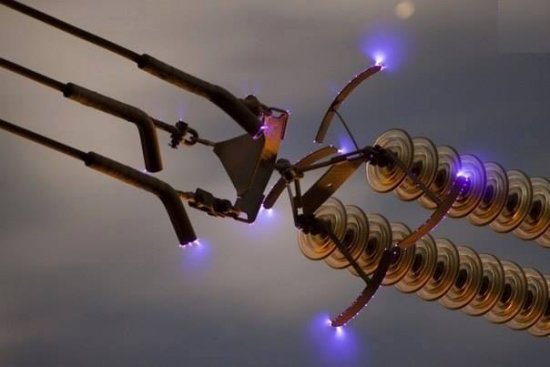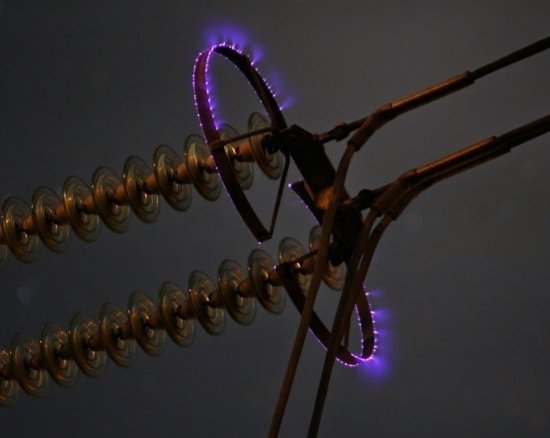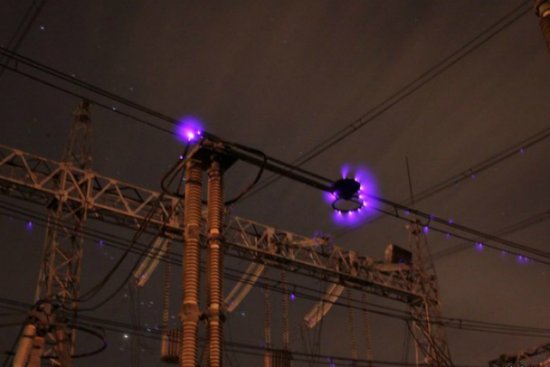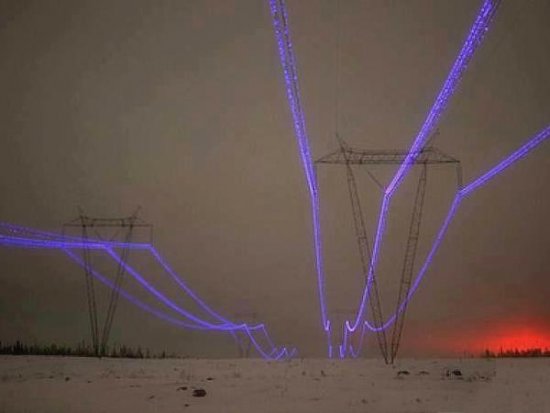Coronal discharge - origin, characteristics and application
Under conditions of sharply inhomogeneous electromagnetic fields, on electrodes with a high curvature of the outer surfaces, in some situations a corona discharge — an independent electrical discharge in a gas — can begin. As a tip, a shape suitable for this phenomenon can act: tip, wire, corner, tooth, etc.
The main condition for the onset of discharge is that near the sharp edge of the electrode there must be a relatively higher electric field strength than in the rest of the path between the electrodes, which creates a potential difference.
For air under normal conditions (at atmospheric pressure), the limit value of the electric intensity is 30 kV / cm; at such a voltage, a weak corona-like glow appears at the tip of the electrode. This is why the discharge is called a corona discharge.
Such a discharge is characterized by the appearance of ionization processes only in the vicinity of the corona electrode, while the second electrode may appear completely normal, that is, without the formation of a corona.
Corona discharges can sometimes be observed in natural conditions, for example on the tops of trees, when this is facilitated by the distribution pattern of the natural electric field (before a thunderstorm or during a snowstorm).
The formation of corona discharge proceeds in the following way. An air molecule is accidentally ionized and an electron is emitted.
The electron experiences an acceleration in an electric field near the tip and reaches enough energy to ionize it as soon as it encounters the next molecule in its path and the electron takes off again. The number of charged particles moving in an electric field near the tip increases like an avalanche.
If the sharp corona electrode is a negative electrode (cathode), in this case the corona will be called negative and an avalanche of ionization electrons will move from the tip of the corona to the positive electrode. The generation of free electrons is facilitated by thermionic radiation of the cathode.
When an avalanche of electrons moving from the tip reaches the region where the strength of the electric field is no longer sufficient for further avalanche ionization, the electrons recombine with neutral air molecules, forming negative ions, which then become current carriers in the area outside the crown. The negative corona has a characteristic uniform glow.
In the event that the source of the corona is a positive electrode (anode), the movement of avalanches of electrons is directed towards the tip, and the movement of ions is directed outward from the tip. Secondary photoprocesses near the positively charged tip facilitate reproduction of the avalanche-triggering electrons.
Far from the tip, where the electric field strength is not sufficient to ensure avalanche ionization, the current carriers remain positive ions moving towards the negative electrode. The positive corona is characterized by streamers that spread in different directions from the tip, and at higher voltages the streamers take the form of spark channels.
Corona is also possible on the wires of high-voltage power lines, and here this phenomenon leads to losses of electricity, which is spent mainly on the movement of charged particles and partly on radiation.
Corona on the conductors of the lines occurs when the field strength on them exceeds the critical value.
Corona causes the appearance of higher harmonics in the current curve, which can sharply increase the disturbing influence of power lines on communication lines and the active component of the current in the line, due to the movement and neutralization of space charges.
If we ignore the voltage drop in the coronal layer, then we can assume that the radius of the wires and therefore the capacity of the line periodically increases and these values fluctuate with a frequency 2 times greater than the frequency of the network (the period of these changes ends in the half-period of the operating frequency).
Since atmospheric phenomena have a significant influence on the energy loss with the corona in the line, the following main types of weather should be taken into account when calculating the losses: fair weather, rain, frost, snow.
To combat this phenomenon, the conductors of the power line are divided into several parts, depending on the voltage of the line, to reduce the local voltage near the conductors and prevent the formation of corona in principle.
Due to the separation of the conductors, the field strength decreases due to the larger surface area of the separated conductors compared to the surface area of a single conductor of the same cross-section, and the charge on the separated conductors increases in a smaller number of times than the surface area of the conductors.
Smaller wire radii give a slower increase in corona loss. The smallest corona losses are obtained when the distance between the conductors in the phase is 10 — 20 cm. However, due to the danger of ice growth on the phase conductor bundle, which will lead to a sharp increase in the wind pressure on the line, the distance is takes for 40-50 cm.
In addition, anti-corona rings are used on high-voltage transmission lines, which are toroids made of a conductive material, usually metal, that is attached to a terminal or other high-voltage hardware part.
The role of the corona ring is to distribute the gradient of the electric field and lower its maximum values below the corona threshold, thereby preventing the corona discharge completely or at least the destructive effects of the discharge being transferred from the valuable equipment to the ring.
Corona discharge finds practical application in electrostatic gas purifiers, as well as for detecting cracks in products.In copying technology — to charge and discharge photoconductors and to transfer coloring powder to paper. In addition, the corona discharge can be used to determine the pressure inside an incandescent lamp (by the size of the corona in identical lamps).




